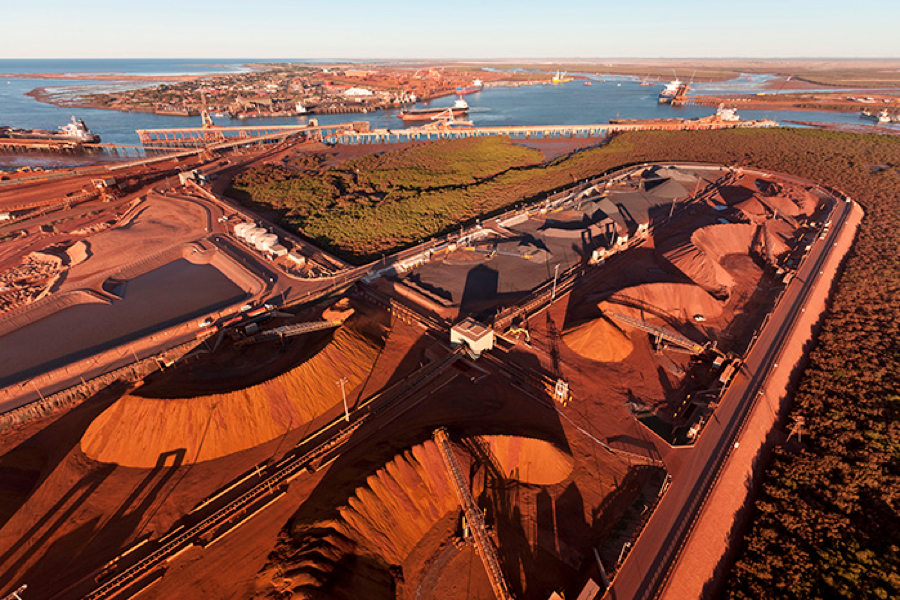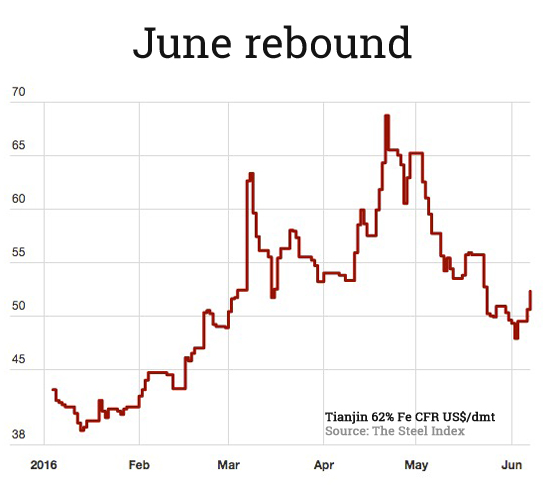
On Tuesday the Northern China benchmark iron ore price advanced more than 3% to $52.30 per dry metric tonne, a more than two week high according to data supplied by The Steel Index.
The steelmaking raw material is down sharply since trading within shouting distance of the $70 mark in mid-April but is back in bull territory for 2016 with a 22% rise since the beginning of the year and a 40% rebound since hitting near-decade lows in December.
The massive cost deflation in the past two years, helped by lower oil prices and freight rates, as well as a depreciation in producers’ currencies, may have come to an end
Iron ore’s fightback comes despite data showing exports from top supplier Australia nearing record levels and higher port stocks in China pointing to weakening fundamentals for the commodity.

Shipments from Port Hedland in the Pilbara region of West Australia increased 4% from last year and totalled 39.4 million tonnes in May – not far off March’s all-time record of 39.5 million. Cargoes from world number three and four iron ore producers BHP Billiton and Fortescue Metals Group use the facility which is responsible for the bulk of the seaborne trade.
Data released last week showed stockpiles of iron ore at ports in China, responsible for consuming nearly three quarters of seaborne cargoes, climbing back above 100 million tonnes to levels last seen at the end of 2014.
Analysts at Citigroup upgraded their forecasts for iron saying Chinese demand may “surprise to the upside“, but the investment bank still expects a decline to an average of $49 a tonne this year and $42 next year before falling to $38 in 2018. Previously Citigroup predicted a retreat to below $40 as soon as the end of this year.
The commodity may also find some support from a potential increase in miners’ production costs according to the bank:
The “massive” cost deflation in the past two years, helped by lower oil prices and freight rates, as well as a depreciation in producers’ currencies, may have come to an end.